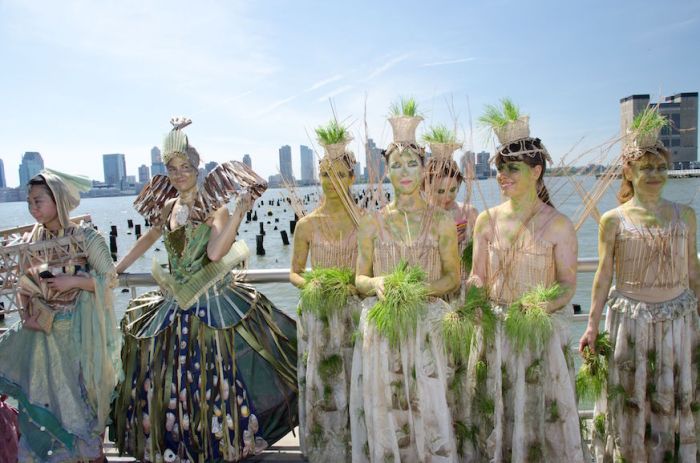Warm weather across the East Coast has many speculating if the doomsday scenario promised by global warming activists is coming true.
“Global warming … that’s the only thing that can explain this,” Vanessa Vicorin, 20, of Queens. “It’s December and yesterday was really, really hot and I don’t want a dry Christmas.” “Thank God for global warming,” said 50-year-old Bob, a Brooklynite who declined to give his last name, as he sat outside the Pearl Street Playground sipping a smoothie.
While the warm Pacific weather pattern known as El Niño is currently active, which could be causing the unusual temperatures, meteorologists and scientists are not entirely sure if El Nino is the only factor —or if climate change has made El Niño a stronger force than ever this year. “There is some emerging evidence now that climate change is leading to stronger El Niños, so the fact that we are witnessing not just an El Niño event but an El Niño event of record strength could indeed be a consequence of human-caused climate change,” said professor Michael Mann, director of Penn State’s Earth System Science Center and author of climate science’s famed “Hockey Stick Graph.” RELATED: Quiz: How much do you really know about climate change?
“The heat records we are seeing across the northern half of the country are likelyfavored in part to the unusual jet stream pattern associated with El Niño, and in part to the overall warmer warming baseline of winter temperatures due to global warming,” Mann said. But not everyone agrees.
Nelson Vaz, a meteorologist with the National Weather Service in Upton, N.Y., cautioned against making the link between warm afternoons and global warming.
“You can’t really make a direct correlation to climate change just because of weather patterns that we see on a week-to-week basis,” Vaz said.
It’s much more likely New Yorkers have El Niño to thank for the winter heat, he said.
“We do go through these cycles with strong El Niños. This has happened in the past and we’ll see episodes in the future,” he said. “So in terms of making a correlation [to climate change], it’s just tough to do.” Ellen Mecray, northeast regional climate services director for the National Oceanic and Atmospheric Administration, meanwhile, said climate change should also be part of the warm weather conversation this month. RELATED: Advocates urge NYC to ramp up climate change reforms “My short answer would be both,” Mecray said, when asked whether El Niño was causing the warm weather. “We’ve got a fairly typical El Niño fall from what we’ve seen, and so far we’re seeing a pretty mild start to the winter season. But I think it’s that, combined with the fact that we have some of the warmest ocean conditions we’ve seen.” John Bolaris, a meteorologist based in the Philadelphia area, said climate change isn’t responsible for the current warm phase.
“It doesn’t have anything to do with climate change, because it just doesn’t happen that way. You don’t have winter last year near record lows, and then the next year, have near-record warms and say it’s climate change,” Bolaris said. “The warm day over the weekend doesn’t mean there was climate change — it means we have had a big, strong effect from El Niño.” Prof. Benjamin Horton, a professor at Rutgers University, said El Nino might not be the cause, but that “waviness” in the jetstream could be responsible for climate shifts like from a cold snowy winter in 2014 to a warm on in 2015. RELATED: 2015 weather system called’GodzillaEl Nino’
“It’s been the case for the past few years that the jetstream has a very wavy pattern. It’s normally very straight,” Horton said.
These jetstream changes pushed colder air south in 2014, and in 2015 they seem to be forcing warm air up the east coast, Horton said.
“What the driver is for the wavy nature of the jetstream is unknown and debatable.Some people would say its a normal variability; other people would say that its related to changes in Arctic sea ice,” Horton said. “The answer is unknown.”
A warm December in New York: Is it El Niño or climate change?

NICOLAUS CZARNECKI/METRO






















